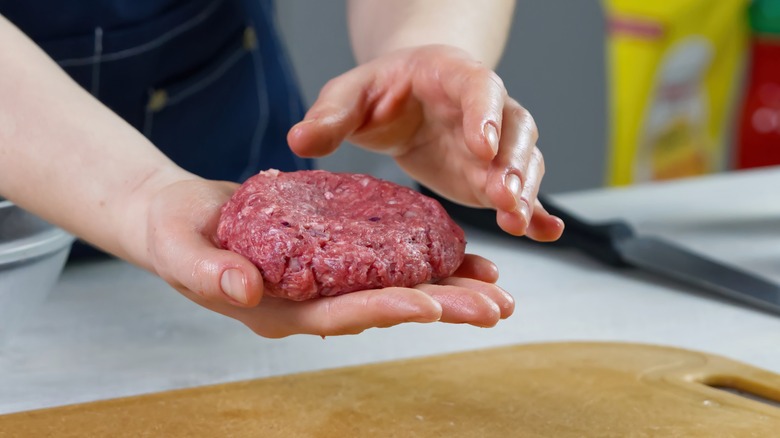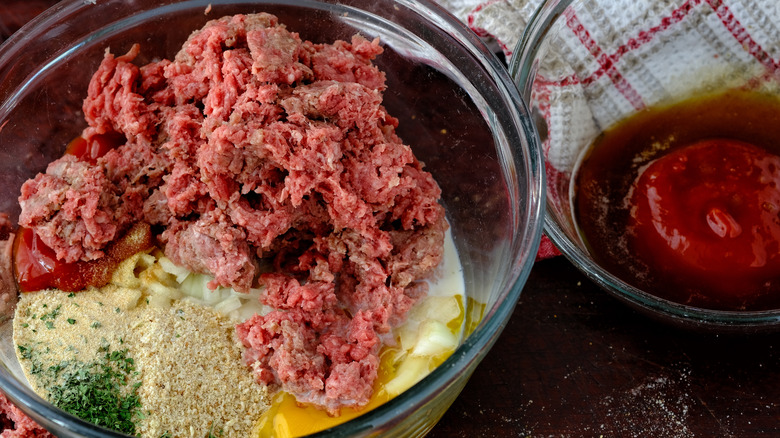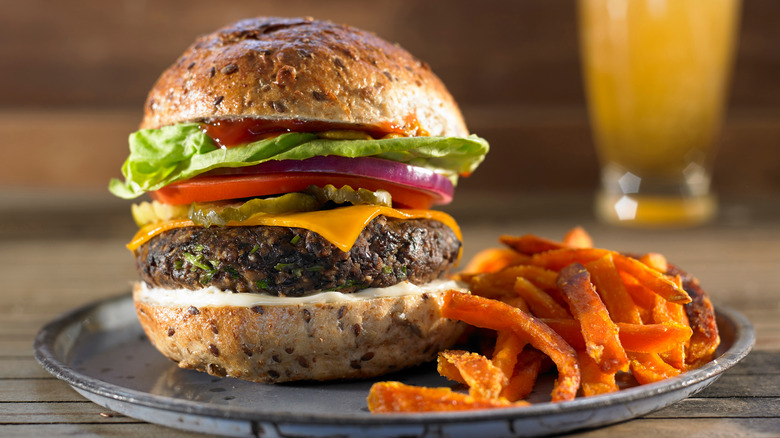The Rule Of Thumb To Remember For Stretching Burger Meat With Fillers
There's nothing quite like the taste of a handcrafted burger, and no two are ever exactly alike. One tactic to make your homemade patty unique is using fillers, added ingredients that can enhance the flavor and texture of a burger while using less meat. Although fillers might initially seem to lower the quality of the final product, this idea actually makes it into some chefs' top tips for making the best burgers.
But at what point does filler become, well, just filler? Use the recommended ratio of 1 cup of filler per every 1 pound of ground meat when making burgers. That's the sweet spot for achieving the filler's benefit without diluting the meaty flavor.
There are many reasons for putting a filler in your homemade burgers. In addition to the health risks of consuming red meat, it's also downright expensive. For instance, the average cost of ground beef in the U.S. increased over 37% from 2013 to 2023, so many consumers often look to stretch that food-dollar further. But regardless of your "why," the rule of thumb for adding fillers is to not overwhelm the meat's natural flavor by adding too much of the substitute.
Cut-size matters when measuring
The 1-cup-per-pound rule is simple, effective, and easy to remember for the frazzled cook. However, cut-size really matters when measuring. 1 cup of minced mushrooms, for example, is a lot more product than 1 cup rough-chopped, so experiment with different chop-sizes to achieve your perfect burger texture. For ingredients of uniform volume, like cooked lentils or dry oats, you can just run with the 1-cup-1-pound ratio without second-guessing.
Keep in mind, though, that the water content of your filler can make a big impact on your final product's juiciness, too. If you go for a drier option like bread crumbs or oats, you may need to splurge on a higher-fat meat to maintain moisture levels. Alternatively, mushrooms or grated veggies already have a high moisture content, so you can get away with a leaner cut of beef. If you're substituting ground turkey or ground chicken for beef, try out the recipe as-is with the meat swap included before experimenting further with fillers.
The best fillers for the best burgers
Filler possibilities abound. If you're looking for a healthier twist on your grilled classic, try adding your favorite bean to the mix. You'll lower the burger's saturated fat while adding fiber and potassium. Black beans typically take the spotlight in the burger arena, but pinto beans or navy beans work well, too. Beans will also add a creamier, softer texture that lessens meat's chewiness.
Another health-conscious, cost-saving option is cooked whole grains. Try barley, rice, or quinoa for a lighter burger that leaves you feeling energized rather than weighed down with grease. You can also use up your leftovers and minimize food waste when choosing fillers.
Or if you're trying to max out protein content, consider soy-based fillers like tofu, tempeh, or textured vegetable protein (T.V.P.). Since soybeans are a complete protein, these products can still satisfy die-hard carnivores without significantly lowering total protein count. So, next time you crave a healthy beef burger that won't break your budget, strategically substitute a cup of one of these delicious yet functional fillers alongside that pound of ground meat.


